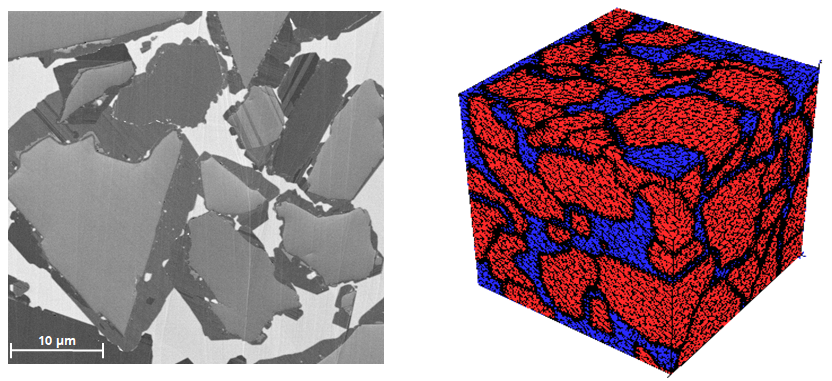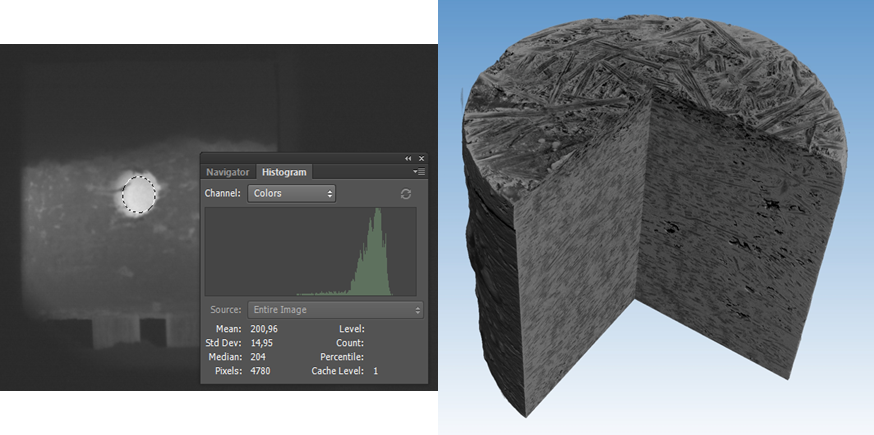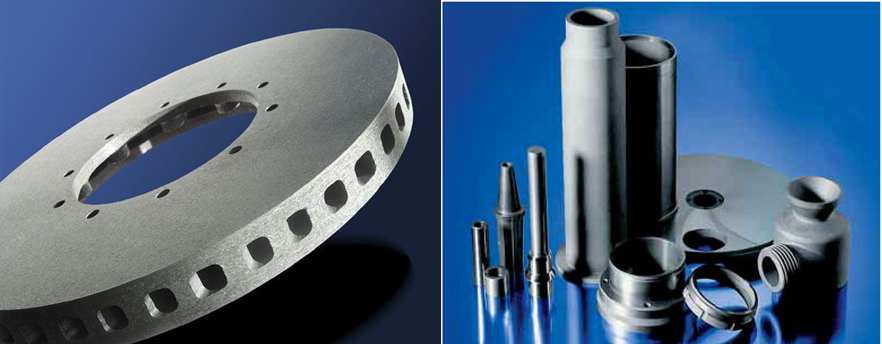Completed funded project
Motivation
Silicon carbide-based materials are at the top of the materials scale alongside a few, significantly more expensive materials. They are technically interesting because of their good high-temperature properties, high chemical resistance, good mechanical properties and high thermal conductivity. They are used in fluidics, thermal engineering and friction technology, especially when unfavourable ambient conditions are present. However, with maximum hardness requirements, application temperature and thermal conductivity, SiC is one of the ceramics with a very unfavourable CO2 balance. The LSI process (Liquid Silicon Infiltration) uses the infiltration of a Si melt into a porous preform to produce largely dense SiC composites at moderate temperatures, e.g. SiSiC or C/SiC.
Objective

The aim of the project was to develop an LSI process that is both inherently safe and energy efficient. The process understanding was to be fundamentally improved and the energy requirement was to be significantly reduced. With the improved process new SiSiC and C/SiC components should be designed.
Results

The LSI process was analysed in situ with the Thermo-Optical Measurement Systems of the HTL. Essential measurement parameters are:
- Weight absorption during silicon infiltration
- Movement of the infiltration front
- Heat generation through SiC formation
- Wetting properties of the silicon melt
- Form changes of the preform due to internal stresses
The measured data were used as input data for a computer simulation of the LSI process, which was used to optomise the process parameters. In parellel, the microstructures of the ceramics were analysed, generated in the computer and the application properties were simulated. This simulation served to test the potential of the SiC ceramics.
Project Data
| Project Duration | 15.06.2011 - 14.06.2014 |
| Sponsor | Bavarian Research Foundation |
| Funding Amount | 500,000 Euro |
| Project Partners | Fraunhofer-Centre HTL Brembo SGL Carbon Ceramic Breaks CeramTec |
| Project Coordination | Fraunhofer-Centre HTL |
| Project Management at the HTL | Jens Baber |

 Fraunhofer ISC, Center for High Temperature Materials and Design HTL, Bayreuth
Fraunhofer ISC, Center for High Temperature Materials and Design HTL, Bayreuth